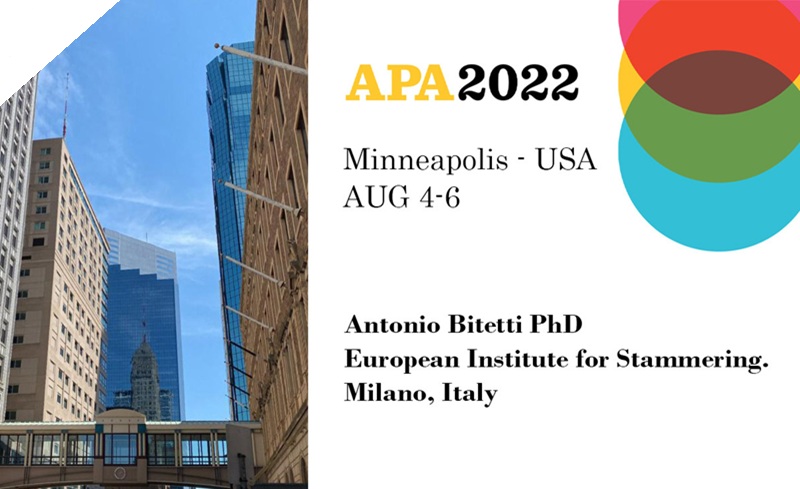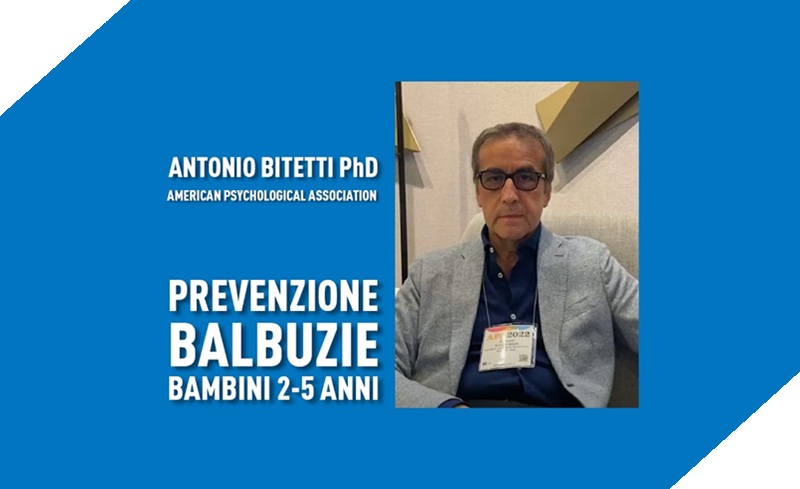The main classification of childhood stuttering is the one that divides this disorder into primary stuttering and secondary stuttering. This classification takes into account the time of onset of the disorder and the characteristics of the disorder itself.
The classification of childhood stuttering
The main classification of childhood stuttering is the one that divides this disorder into primary stuttering and secondary stuttering. This classification takes into account the time of onset of the disorder and the characteristics of the disorder itself.
Primary stuttering (also known as running-in stuttering or pseudo-stuttering) is a fairly common disorder; it is estimated, in fact, that the problem affects 30% of infants, especially males; primary stuttering usually disappears spontaneously without the need for speech therapy or language rehabilitation.
Secondary stuttering (also called true stuttering) is a much more serious problem than primary stuttering. It usually manifests itself in that period of life that goes from the age of 6 to 14. It is very unlikely (although not impossible) that true stuttering manifests itself in adulthood.
THE MAIN SYMPTOMS OF CHILDHOOD STUTTERING
- Repetitions of syllables or consonants such as pa-pa-pa-pane or ppppp-pappa, often accompanied by a blockage in the flow of air, which some confuse with a possible breathing problem.
- Interiors as “um” “em”.
- Negativism: The child who stutters often presents a negative and repulsive attitude towards speaking. It is the result of repeated attempts to speak correctly and the frustration that comes from several failed attempts.
- Synkinesias and facial tics: childhood stuttering is often accompanied by facial expression mimics, or even convulsive body movements, called synkinesias. These, especially in tonic stuttering. Facial tension is the result of an extreme attempt by the child who stutters to find the energy and strength necessary to get the word out correctly.
- Circumlocutions: the stutterer tries to avoid his difficulty by replacing words that he perceives as difficult to pronounce with others that may be more facilitating.
- Physical Problems: Repeated attempts to speak fluently can cause several physical changes. The person may clench their jaw, hold their breath, and clench their fists. This, in turn, can cause muscle tension in the shoulders, limbs, and forehead.
Childhood stuttering can represent a particular moment in the gradual acquisition of language which, as we know, usually occurs between 12 months and 3 years. In particular, the average age of onset of childhood stuttering is around 3 years of age. There is no need to worry if, at this stage, the child breaks up, repeats or prolongs the syllables that form words. For some authors, it may be a question of more or less typical disfluencies. In 4 out of 5 cases, childhood stuttering resolves spontaneously, at most within 5 years from the moment of its onset and, in 75% of cases, even within the first 3 years.
This does not change the fact that the phenomenon must be followed carefully and kept under careful observation from its first manifestations. Statistically, childhood stuttering is observed more frequently in males, and hence the tendency for some researchers to glimpse a strong heredity of the disorder, which in some cases can regress but reappear in adolescence.
Even if the child has been stuttering for a year, it does not mean that the problem will persist. The disorder can regress spontaneously even 3-4 years after its onset. However, a lot can be done to alleviate it, or overcome it. For this reason, it is necessary to avoid what Dr. Antonio Bitetti explains in his work on prevention, that is, to absolutely avoid the problem becoming chronic and becoming a persistent and structured form.
THE CURE FOR CHILDHOOD STUTTERING
THE INTEGRATED APPROACH TO CHILDHOOD STUTTERING
Childhood stuttering, on the other hand, represents an unsuccessful phase of this evolution, from stuttering to healthy and effective language. Important relational aspects can affect this developmental block. To avoid this risk of chronicity and therefore of stuttering, it is necessary to intervene early.
Usually childhood stuttering, that is, stuttering in a child of 3-4 years or stuttering in a child under 5 years old, is usually not treated, we tend to wait for it to become chronic, to be sure that the symptoms are certain, on a safe diagnosis. Usually we tend to think that it can regress spontaneously.
Dr. Antonio Bitetti has a different opinion. He has introduced an interesting therapeutic path, suitable for parents of children with stuttering of 3-4 years. Not only that, but also in 5-year-old children who still stutter and who present aspects susceptible to becoming elements of chronicity of the symptoms and therefore, of true stuttering. Pediatricians are cautious and wait-and-see, speech therapists give up because they do not have the right tools to deal with the initial aspects of childhood stuttering.
The Integrated Approach to the symptoms of stuttering children aged 3-4 and 5 years, unlike the therapeutic model aimed at older patients, is focused on correcting mainly the parents’ attitudes, and is specifically addressed to them, without the child’s presence, to avoid unfounded fears. This work is based on intuitions and cutting-edge research into the causes of childhood stuttering.
The intra-family communication dynamic is addressed and all those difficulties that Dr. Antonio Bitetti believes to be fundamental in clarifying the entire dynamic in question are corrected, to allow the child to recover that basic serenity, necessary to speak well and move away as soon as possible from the risk of it becoming a real stuttering.
This important research by Dr. Bitetti on childhood stuttering, supported by testimonies of parents of children undergoing treatment, will be the subject of disclosure in some American scientific journals in the sector and will be part of a broader and more detailed research in his new book, which will be published in the coming months, in which the mechanism of control over speech and other similar disorders will be addressed (Bitetti A. La Balbuzie Approccio Integrato, Milan, 2010).
It is serious research that promotes knowledge and frees us from fears.
On this, Dr. Antonio Bitetti has always been at the forefront. All his activities, his books, participation in scientific conferences, disclosures of his research work, his lectures at the university, are all experiences and training at your service.




